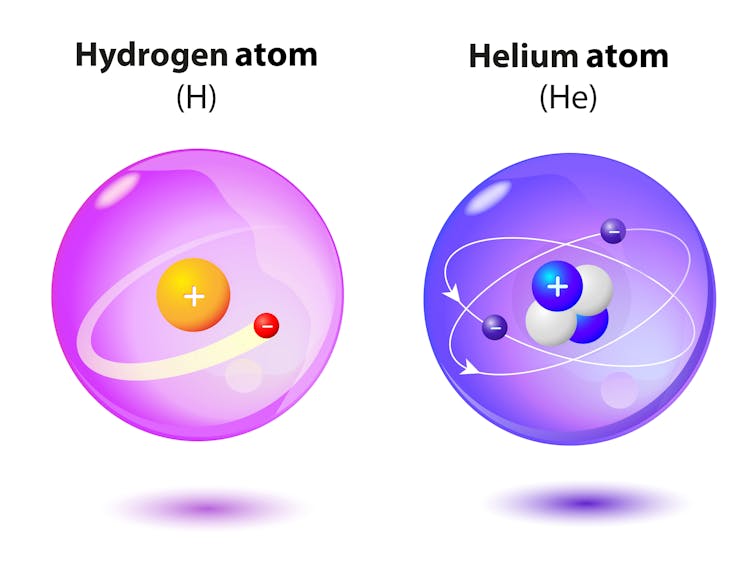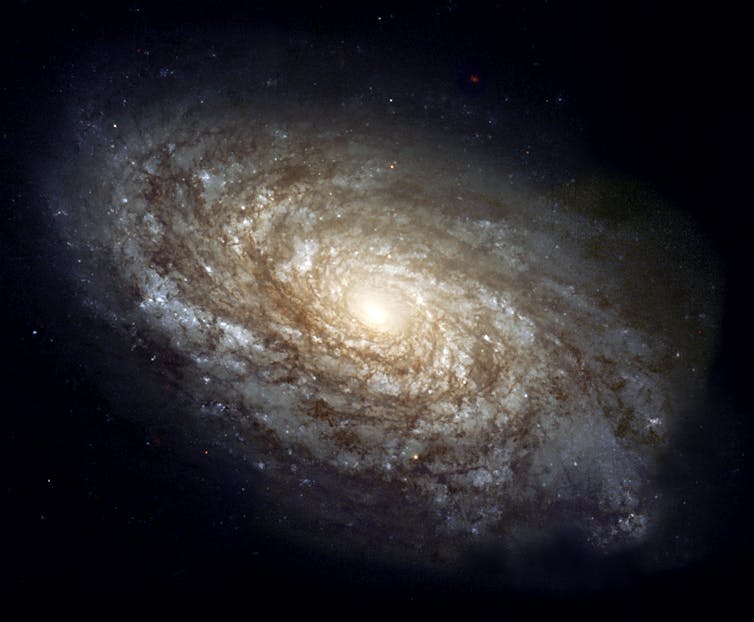
Orsola De Marco, Macquarie University

If you have a question you’d like an expert to answer, send it to This email address is being protected from spambots. You need JavaScript enabled to view it..
How are stars made? –Zali, age 8, Karkoo, South Australia.
How are stars made? Well, stars are not made, they make themselves! Or maybe I should say: they come into existence because of a powerful force of nature called gravity.
Galaxies are where new stars are born. In galaxies, there are very large and fluffy clouds of gas and dust called nebulae.
Gravity makes clumps inside these fluffy clouds - like raisins in a cake. When one of these clumps start to get tightly compacted and squished together, we say its density goes up. Density means how tightly something is compacted, or squished together.
These dense clumps of gas also get hotter and hotter in the centre. When the gas in the centres of a clump reaches a certain temperature (millions of degrees), something quite special starts happening inside the clump: hydrogen atoms come together to form helium.
(As I am sure you know, atoms are like tiny building blocks that make up everything around us. You, me and all the gas and space dust – it’s all made of atoms).

When hydrogen atoms come together to form helium, it’s called nuclear fusion. This process releases a lot of energy (it’s the opposite, yet similar process that happens when a nuclear bomb goes off). And this is how a star begins its life.
Read more: Curious Kids: Why do stars twinkle?
The life and death of a star
Just like us, stars are born, they live and then they die. Curiously, the length of a star’s life depends on its birth weight. Light, low mass stars live very, very long lives.
Our Sun, as you probably know, is actually a star. It is about 4.5 billion years old, and is in the middle of its life. In another five billion years it will get much, much bigger but then it will start to shrivel. After that, it will die. Its nuclear power source will switch off and it will just sit there, cooling, like a burnt out piece of charcoal in a barbecue.
Stars that are many times heavier than our Sun live much shorter lives. The most massive stars, live for only a million years or so. Their deaths are much more spectacular than the quiet shrivelling of Sun-type stars. They go out in a bang. Scientists call them “supernovae”.

You’re made of star dust
Have you ever heard the saying “we are all made of star dust?” It’s actually true. Inside a star, helium atoms combine to make carbon, which is at the root of chemicals that you and all living things are made out of.
There is plenty we still do not understand about the mysterious lives of stars. Fortunately, we have large telescopes and space satellites to get better and better pictures. All we need is smart people like you to come and help figure out the puzzle!
Read more: Curious Kids: can Earth be affected by a black hole in the future?
Hello, curious kids! Have you got a question you’d like an expert to answer? Ask an adult to send your question to This email address is being protected from spambots. You need JavaScript enabled to view it.![]()
Orsola De Marco, Astrophysicist , Macquarie University
This article is republished from The Conversation under a Creative Commons license. Read the original article.

